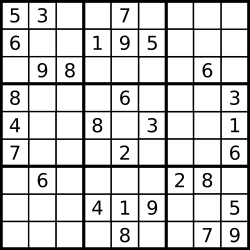本文来源于自己和了解到的常见的国内的面试问题,在此汇总与收集
Java有关问题
1. final的使用?final在修饰变量、方法、类时的不同?
根据程序上下文环境,Java关键字final有“这是无法改变的”或者“终态的”含义,它可以修饰非抽象类、非抽象类成员方法和变量。
final类不能被继承,没有子类,final类中的方法默认是final的。
在设计类时候,如果这个类不需要有子类,类的实现细节不允许改变,并且确信这个类不会载被扩展,那么就设计为final类。
final方法不能被子类的方法覆盖,但可以被继承。(注意:父类的private成员方法是不能被子类方法覆盖的,因此private类型的方法默认是final类型的。)
如果一个类不允许其子类覆盖某个方法,则可以把这个方法声明为final方法,把方法锁定,防止任何继承类修改它的意义和实现。编译器在遇到调用final方法时候会转入内嵌机制,大大提高执行效率。
final成员变量表示常量,只能被赋值一次,赋值后值不再改变。
基本数据类型(int、double、char…)运用final时,使数值恒定不变;
对象引用运用final时,final使得引用恒定不变,引用内部的数据若不是final型,可以进行修改。
数组类型运用final时,final使得数组引用恒定不变,数组内部的数据若不是final型,可以进行修改。final不能用于修饰构造方法。
扩展:
final 与static:
- final指明数据为一个常量,恒定无法修改;
- static指明数据只占用一份存储区域;
关于static关键字:
static可以用来修饰类的成员方法、类的成员变量,另外可以编写static代码块来优化程序性能。
static方法
static方法一般称作静态方法,由于静态方法不依赖于任何对象就可以进行访问,因此对于静态方法来说,是没有this的,因为它不依附于任何对象,既然都没有对象,就谈不上this了。并且由于这个特性,在静态方法中不能访问类的非静态成员变量和非静态成员方法,因为非静态成员方法/变量都是必须依赖具体的对象才能够被调用。因此,如果说想在不创建对象的情况下调用某个方法,就可以将这个方法设置为static。我们最常见的static方法就是main方法,至于为什么main方法必须是static的,现在就很清楚了。因为程序在执行main方法的时候没有创建任何对象,因此只有通过类名来访问。static方法不能被重写(意思是语法上不会报错,但达不到重写所希望达到的多态的效果)
static变量
static变量也称作静态变量,静态变量和非静态变量的区别是:静态变量被所有的对象所共享,在内存中只有一个副本,它当且仅当在类初次加载时会被初始化。而非静态变量是对象所拥有的,在创建对象的时候被初始化,存在多个副本,各个对象拥有的副本互不影响。
static成员变量的初始化顺序按照定义的顺序进行初始化。
static代码块
static关键字还有一个比较关键的作用就是 用来形成静态代码块以优化程序性能。static块可以置于类中的任何地方,类中可以有多个static块。在类初次被加载的时候,会按照static块的顺序来执行每个static块,并且只会执行一次。
易错点:
- Java中的static关键字不会影响到变量或者方法的作用域。在Java中能够影响到访问权限的只有private、public、protected(包括包访问权限)这几个关键字
- 在Java中切记:static是不允许用来修饰局部变量
- 静态成员变量虽然独立于对象,但是不代表不可以通过对象去访问,所有的静态方法和静态变量都可以通过对象访问(只要访问权限足够)。
 For example, the above binary watch reads “3:25”. Given a non-negative integer _n_ which represents the number of LEDs that are currently on, return all possible times the watch could represent. Example:
For example, the above binary watch reads “3:25”. Given a non-negative integer _n_ which represents the number of LEDs that are currently on, return all possible times the watch could represent. Example: